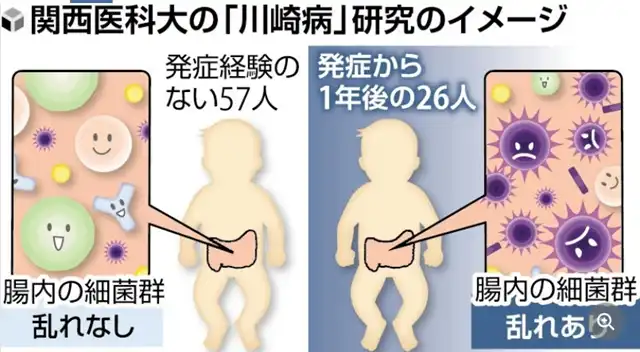“Kawasaki Disease” Linked to Imbalance in Gut Bacteria in Children?
- Normal Liver Cells Found to Promote Cancer Metastasis to the Liver
- Nearly 80% Complete Remission: Breakthrough in ADC Anti-Tumor Treatment
- Vaccination Against Common Diseases May Prevent Dementia!
- New Alzheimer’s Disease (AD) Diagnosis and Staging Criteria
- Breakthrough in Alzheimer’s Disease: New Nasal Spray Halts Cognitive Decline by Targeting Toxic Protein
- Can the Tap Water at the Paris Olympics be Drunk Directly?
“Kawasaki Disease” Linked to Imbalance in Gut Bacteria in Children?
- Should China be held legally responsible for the US’s $18 trillion COVID losses?
- CT Radiation Exposure Linked to Blood Cancer in Children and Adolescents
- FDA has mandated a top-level black box warning for all marketed CAR-T therapies
- Can people with high blood pressure eat peanuts?
- What is the difference between dopamine and dobutamine?
- How long can the patient live after heart stent surgery?
“Kawasaki Disease” Linked to Imbalance in Gut Bacteria in Children? Potential Prevention through Dietary Fiber, Says Kansai Medical University
The research team at Kansai Medical University has announced that the cause of Kawasaki disease, an inflammatory condition with unknown origins prevalent in children, may be linked to an imbalance in the composition and balance of various bacterial groups within the gut.
The study suggests that providing children with dietary fiber could potentially increase the presence of bacteria that suppress inflammation, leading to preventive benefits.
The findings have been published in an international academic journal.

screenshot from Yahoo Japan
Kawasaki disease, first reported by pediatrician Tomisaku Kawasaki in 1967, remains a mysterious illness affecting children, with approximately 1 in 400 children under the age of 4 developing it. The disease triggers inflammation in the body’s blood vessels, resulting in symptoms such as fever, red eyes, and red bumps on the tongue. Despite advancements in treatment, approximately 2.5% of those affected still experience a lingering complication—bulges (coronary artery aneurysms) in the heart’s blood vessels. Long-term medication is sometimes necessary to prevent complications like angina or myocardial infarction.
The bacterial community in the gut, known as the “intestinal microbiota,” is unique to each individual and forms from the fetal stage to around 2 to 3 years old, remaining relatively stable thereafter. Professor Kazunari Kaneko and Assistant Professor Yoshiki Teramoto, along with their research team, examined fecal samples from 26 children who had recovered from Kawasaki disease and were medication-free for about a year after onset. They compared these samples with those of 57 children who had not developed the disease.
The results revealed that the microbiota of children who had developed Kawasaki disease had a higher proportion of bacteria causing inflammation and a lower proportion of bacteria, such as butyric acid bacteria, known to suppress inflammation. The team suggests that providing children with dietary fiber, acting as food for butyric acid bacteria, could potentially prevent Kawasaki disease.
Dr. Hiroyuki Suzuki, Director of the Wakayama Tsukushi Medical and Welfare Center, specializing in Kawasaki disease, commented, “Investigating the pre-onset gut microbiota is challenging, but this study highlights the potential importance of specific bacterial functions in treatment and prevention. Future challenges include examining regional variations and other factors.”
What is “Kawasaki Disease” ?
“Kawasaki Disease” Linked to Imbalance in Gut Bacteria in Children?
(source:internet, reference only)
Disclaimer of medicaltrend.org
Important Note: The information provided is for informational purposes only and should not be considered as medical advice.



